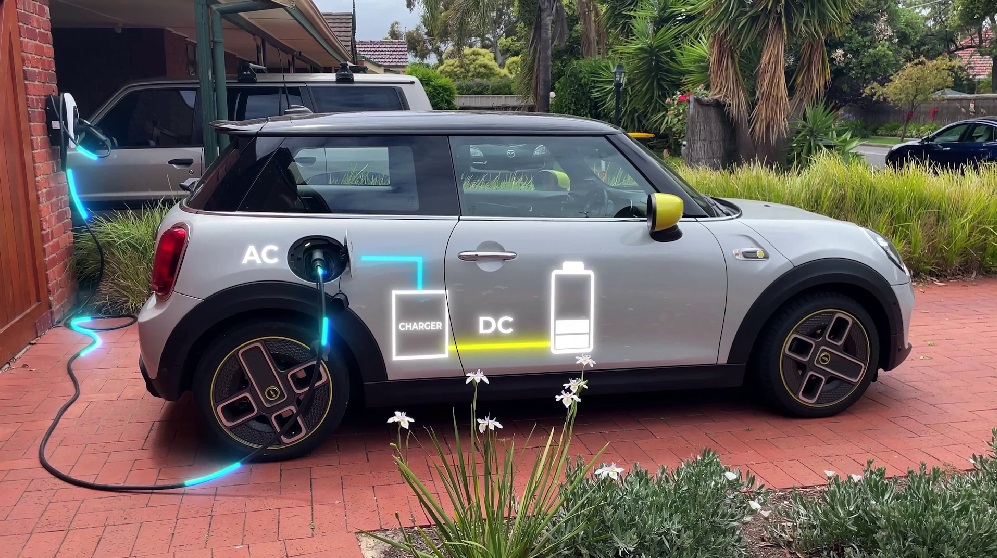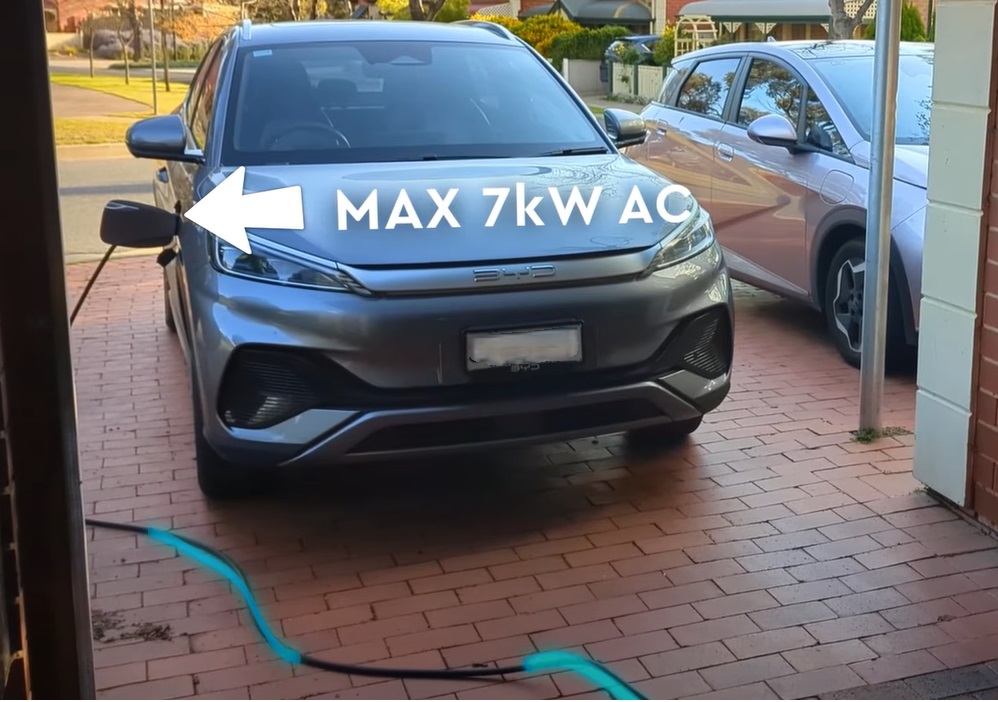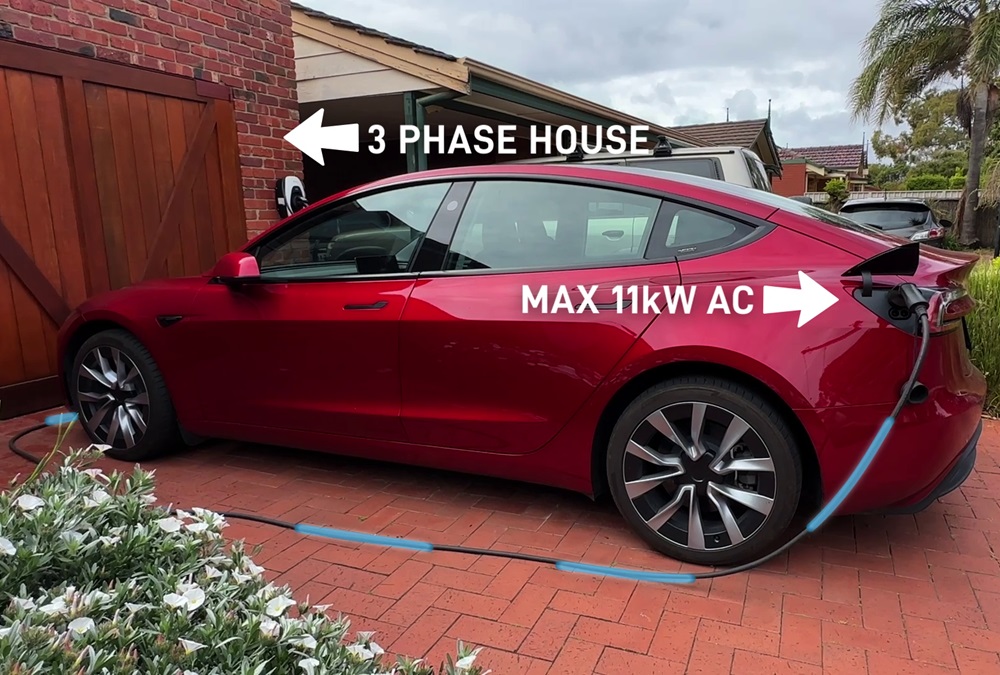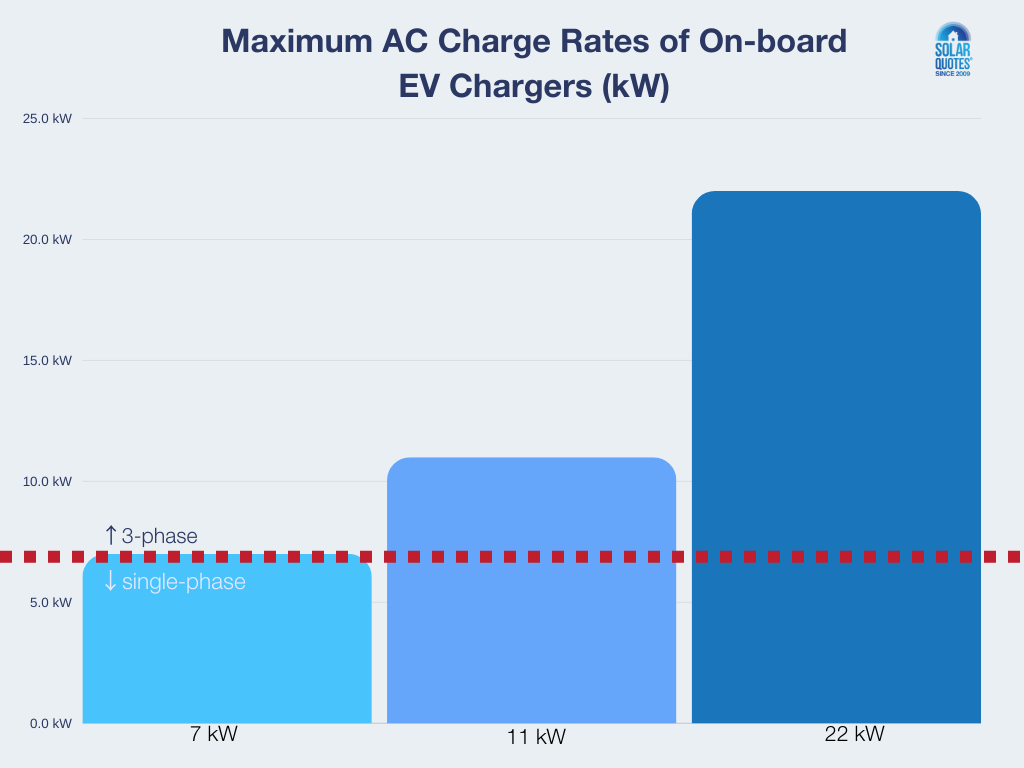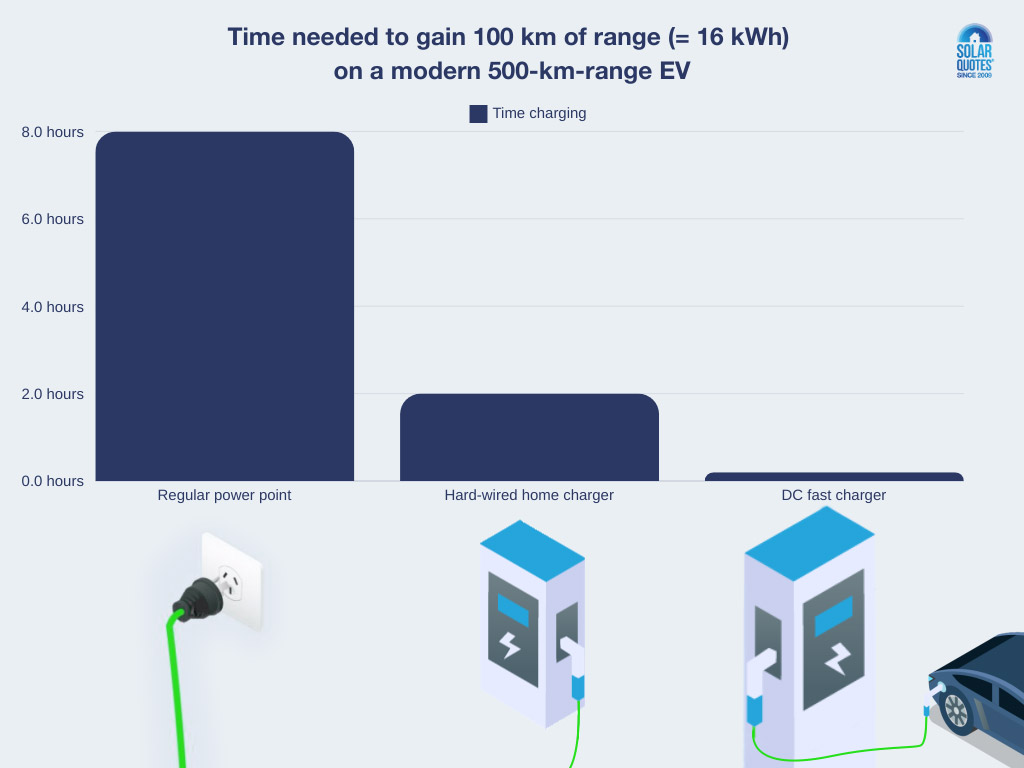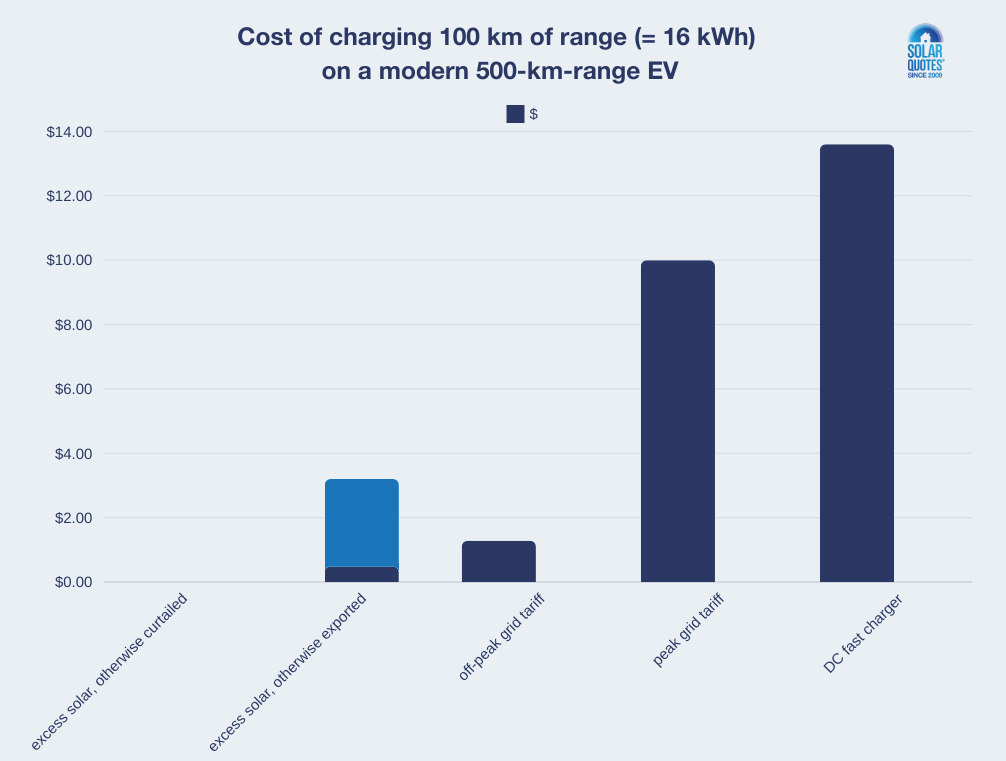Home EV Chargers in Australia: Best Brands, Prices & Installation
Last Updated: 6th Nov 2025 By Finn Peacock, Chartered Electrical Engineer
Buying your first EV charger can feel daunting—we get it. This straightforward guide takes the stress out of choosing the right home EV charger in Australia.
What Should You Look For in a Home EV Charger?
- Pick a hard-wired Level 2 wall charger (7–22 kW) that can refill your EV overnight. Keep the portable “granny” lead in the boot for emergencies.
- Have 3-phase power? Buy a 3-phase charger. It’s only a little extra and gives you faster charging.
- Got solar? A larger system (~10 kW+) + a charger with solar smart charging lets you soak up surplus solar and charge for (almost) free.
- Save DC fast charging for trips. It’s far more expensive than charging at home from solar (or off-peak grid).
You’ll learn how to select the best charger, integrate it seamlessly with solar, avoid common pitfalls, and even make your charger play nicely with home batteries and variable electricity tariffs.
EV Charger Comparison Table
Compare EV charger prices and specifications side-by-side. This comparison tool lists standard and smart electric vehicle charging solutions currently available in Australia.
| Product Name | Tesla Gen 3 Wall Connector | Fronius Wattpilot | myenergi Zappi | GoodWe HCA Series | Sungrow AC22E-01 | SolarEdge ONE EV Charger |
Sigenergy AC EV Charger
|
Victron EV Charging Station | Evnex E2 |
Ohme Home Pro
|
Wallbox Pulsar Max
|
iStore EV Charger |
Delta AC MAX (smart)
|
Smappee EV Wall | Teltonika TeltoCharge | Enphase IQ EV Charger 2 | ABB Terra Wallbox |
EO Mini Pro 2
|
Schneider Charge | ZJ Beny AC EV Charger |
Ocular IQ Solar
|
Scame BE-W Net | Soltaro EV Charger | Weidmuller AC SMART |
EVOS Fleet22
|
Anker Solix V1 Smart EV Charger |
|---|---|---|---|---|---|---|---|---|---|---|---|---|---|---|---|---|---|---|---|---|---|---|---|---|---|---|
| Manufacturer Logo |
 |
 |
 |
 |
 |
 |
 |
 |
 |
 |
 |
 |
 |
 |
 |
 |
 |
 |
 |
 |
 |
 |
 |
 |
 |
 |
| Product Image |
 |
 |
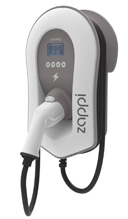 |
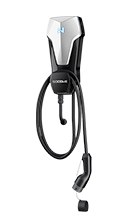 |
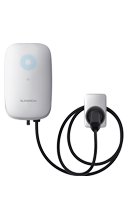 |
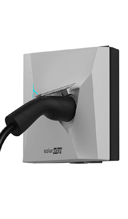 |
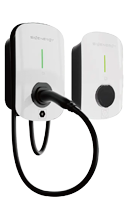 |
 |
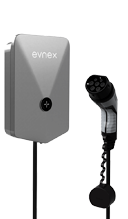 |
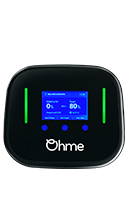 |
 |
 |
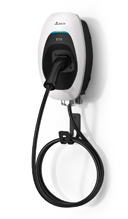 |
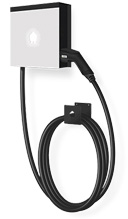 |
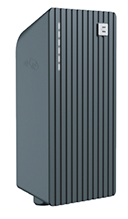 |
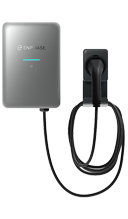 |
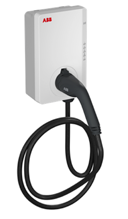 |
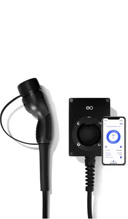 |
 |
 |
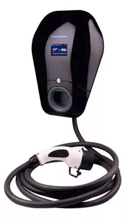 |
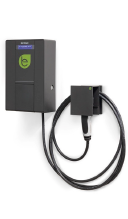 |
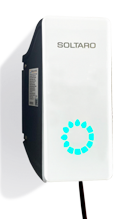 |
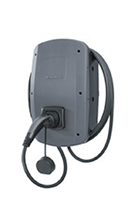 |
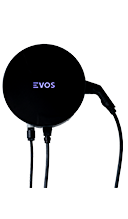 |
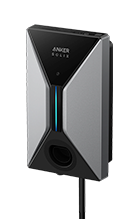 |
| Product variant | ||||||||||||||||||||||||||
| Price (Approx. AUD price RRP inc. GST) | $800 | $1,800 | $1,595 | $850 | $950 | $1,200 | $1,200 | $1,000 | $1,395 | $1,395 | $1,400 | $1,200 | $1,990 | $1,729 | $1,450 | $2,048 | $2,000 | $1,495 | $1,500 | $750 | $1,400 | $1,800 | $1,050 | $800 | $1,800 | $800 |
| Single phase or three phase? | Both | Both | Single-phase | Single phase | Both | Both | Single phase | Both | Single-phase | Single phase | Single-phase | Single phase | Single-phase | Single-phase | Single phase | Both | Single phase | Single-phase | Both | Single phase | Single-phase | Single phase | Single phase | Single phase | Both | Single phase |
| Rated power | 7 kW (1 ph), 22 kW (3 ph) | 22 kW | 7 kW | 7 kW | 22kW | 22 kW | 7 kW | 22kW | 7.4 kW | 7.4 kW | 7.4 kW | 7.4 kW | 7.4 kW | 7 kW | 7.4 kW | 22kW | 7.4 kW | 7.2 kW | 7-22 kW | 7.4kW | 7 kW | 7.4 kW | 7kW | 7kW | 7-22kW | 7.4kW |
| Rated current | 32A per phase | 6-32 A | 32A max | 32 A | 32A | 32A | 32A | 32A | 32 A | 32A | 32 A | 32A | 32 A | 32 A | 32A | 32A | 32A | 32 A | 16-32 A | 32A | 32 A | 32A | 32A | 32A | 32A | 32A |
| Country of manufacture | China | Austria | United Kingdom | China | China | China | China | Netherlands | New Zealand | China | Spain | China | Unknown - manufacturer unresponsive | Belgium | Lithuania | TBD | Italy | United Kingdom | China | China | China | Italy | China | Germany | Australia | China |
| Enclosure dimensions | 345 x 155 x 110 mm | 155 x 110 x 260 mm | 439 x 282 x 122mm | 208 × 450 × 150 | 214 x 346 x 125 mm | 235 x 230 x 130 mm | 234 x 384 x 126 | 390 x 300 x 150 mm | 286 x 185 x 66 mm | 200 x 170 x 100 mm | 204 x 313 x 142 mm | 380 x 169 x 151 mm | 218 x 371 x 167 mm | 300 × 300 × 110 mm | 170 mm x 341 mm x 94 mm | 370 × 250 × 118 mm | 320 x 195 x 110 mm | 175mm x 125mm x 125mm | 352 x 244 x 117 mm | 169 x 380 x 151 mm | 269 x 360 x 146 mm | 235 x 370 x 115 mm | 368 x 168 x 215 mm | 268 x 433 x 150 mm | 380 x 100mm | 211 x 360 x 120 mm |
| Weight | 6.8 kg | 2 kg | 5.5 kg | 6 kg | 6.6 kg | 1.8 kg | 6.4 kg | 3 kg | 2.3 kg | 4 kg | 2.5 kg | 7 kg | 3.8 kg | 9.8 kg | 2.8 kg | 11 kg | 6.5 kg | 1.3 kg | 3.2 kg | 9 kg | 7.6 kg | 6.2 kg | 8 kg | 5.1 kg | 6.5 kg | 4.95 kg |
| PIN/physical lock? | No | Yes | Yes | Yes | No | Yes | RFID | Unknown - manufacturer unresponsive | No | No | Yes | No | No | Unknown - manufacturer unresponsive | Card authorisation | No | No | Unknown - manufacturer unresponsive | Yes | Yes | Yes | No | Optional | RFID on "Value" and "Advanced" models | Lock via app/VID to authorised user | No |
| Multi-user support | Yes | No | No | Yes | No | Yes | No | No | Yes | Yes | Yes (Super-user can create multiple user profiles for different people) | Yes | Yes (RFID card) | Yes | Yes | Yes | No | No | No | Yes | Yes | Yes | Optional | On "Advanced" model | Yes | No |
| Charge cable length | 7.3 meters | N/A | 6.5 meters | 6 meters | 5m / 7m | N/A | 5 m | N/A | 5 meter, 8 meter | 5m / 8m | 5 meters (optional 7 meters) | 7 meters | 5 meters | 8 meters | 5m | 7.5 m | 5m or 7.6m | 5 meters | Untethered, 5m cable or 7m cable | 6 meters | 5 meters | 4m (single phase) 4m/7.5m (three phase) | 6m default | 5m, 7m, 10m | 5 or 6 meters | 7 meters |
| Display | No | No | Yes | No | LED | No | LED | Yes | Yes | Yes - LCD Screen and LED charging status bar | No | LED | No | No | No | LED | Yes | No | Yes (LEDs) | Yes - charging indicator | Yes | Yes | LEDs | No | LED colour status | LED |
| Standby power consumption | < 5W | < 5W | 3W | <6 W | <5W | <5 W | <3.6W | <5W | <4 W | <5W | 5W | 2W | < 2.6 W | < 5W | 4W | <5W | <5W | < 5W | <3W | < 5W | Unknown - manufacturer unresponsive | <5 W | 2W | <5W | <8W | <5W |
| Charging modes | Fast, scheduled | Eco Mode, Next-Trip Mode (both use Solar Surplus), Time Scheduler | 3 mode - Eco, Eco+, Fast | Fast charge, charging from PV only and charging from PV & Battery only. | Solar-only, fast | Smart schedules, excess solar charging | 100% PV charging / Solar boost charging / Fast charging | Manual mode/Automatic mode | Solar-only, Solar with Grid Fallback, Fast and Dynamic Load Balancing | Dynamic Load Balancing & Solar Compatible | Power boost, Eco-smart, Eco-mode | Standard, solar-only | Unknown - manufacturer unresponsive | Solar-only, scheduled, fast | Solar/Dynamic load balancing | Solar-only, fast | Unknown - manufacturer unresponsive | Solar-only, fast | Custom schedule, "Reduce my bill" mode, dynamic load balancing | Multiple - see datasheet | Unknown - manufacturer unresponsive | Ecoplus, Ecosmart, Full | Full Speed, Solar Optimised, Hybrid | Solar, fast | Solar only, Dynamic Load Balancing, Time Schedule, Tariff Schedule, Load Balancing. | Fast, solar-only |
| Solar Smart Charging | No | Yes | Yes | Yes - only if paired with a Goodwe inverter | Yes | Yes | Yes | Yes | Yes | Yes | Yes | Yes | Yes | Yes | Yes | Yes | With additional hardware | Yes (extra cost) | Yes - requires additional hardware | Yes | Yes | No | Yes | On "Value" and "Advanced" models | Yes | Yes |
| Internet connection? | Yes | Yes | Yes | Yes | Yes | Yes | Yes | Yes | Yes | Yes | Yes | Yes | Yes | Yes | Yes | Yes | Yes | Yes | Yes | Yes | Yes | Yes | Yes | Yes | Yes | Yes |
| App control | Yes | Yes | Yes | Yes | Yes | Yes | Yes | Yes | Yes | Yes | Yes | Yes | Yes | Yes | Yes | Yes | Yes | Yes | Yes | Yes | Yes | No | No | Yes | Yes | Yes |
| 3 to 1 phase smart switching | No | Yes | Yes | No | TBD | Yes | No | Not yet - hardware upgrade due Q2 2024 | No | No | Unknown - manufacturer unresponsive | TBD | No | Yes | Yes | Yes | Unknown - manufacturer unresponsive | Unknown - manufacturer unresponsive | No | Unknown - manufacturer unresponsive | No | No | No | On "Value" and "Advanced" models | Yes | TBD |
| OCPP1.6 compatible? | No | Yes | Yes | No | Yes | Yes | Yes | Not yet - software update due 'soon' | No | Yes | Yes | Yes | Yes | Yes | Yes | Yes | Yes | No | Yes | Yes | Yes | Yes | No | On "Value" and "Advanced" models | Yes (upgradable to 2.0) | Yes |
| IP rating | IP 55 | IP 55 | IP 65 | IP 66 | IP 65 | IP 54 | IP 65 | IP 44 | IP 55 | IP55 | IP 54 | IP 65 | IP 55 | IP 54 | IP 55 | IP 55 | IP 54 | IP 54 | IP 55 | IP55 | IP 54 | IP54 | IP 65 | IP 54 | IP 65 | IP 65 |
| Operating temperature | -30 °C to 50 °C | -25 ºC to +40 ºC | -25°C to +40°C | -30 ~ +50 C | -30 ℃ - 50 ℃ | -30~50°C | -30 - +55 °C | -25 - +50 °C | -25°C to 55°C | -25°C to 45°C | -25 ºC to 50 ºC | -25°C ~ 55°C | -30 ºC to +50 ºC | -25 °C to 40 °C | -30ºC - +50ºC | -40°C to 55°C | -35 - +50 °C | -10 °C to 50 °C | -30 ºC to 50 ºC | -25°C - +55°C | -30 ºC to 50 ºC | -30°C to +50°C | -25-55 C | -30 °C to +50 °C | -25 °C to 55 °C | -30°C to 50°C |
| Bi-directional? | No | No | No | No | No | No | No | No | No | No | No | No | No | No | No | V2X "capable" with software unlock | No | No | No | No | No | No | No | No | No | No |
| Warranty (years) | 4 years | 2 years | 3 years | 2 | 3 | 3 years | 3 years | 5 years | 3 years | 3 years from installation date | 2 years | 3 years | 2 years | 3 years | 3 years | 5 | 2 years | 3 years | 2 years | 3 years | 2 years | 4 years | 3 years | 2 years | 2 years | 3 years |
| On our recommended chart? | Yes | Yes | No | Yes | Yes | Yes | Yes | No | No | No | Yes | Yes | Yes | No | No | Yes | Yes | No | Yes | No | Yes | No | No | No | No | No |
| Notes | Free Evnex Residential App, Carbon Tracking, Electricity Tariff Setting, Charging Session History, and Charging Schedule. | Available both tethered and untethered | Free "MyEVOS" app for stop/start/restart, tariff selection and historical charging data | |||||||||||||||||||||||
| Datasheet Supplied? | Tesla Wall Connector datasheet | Fronius Wattpilot datasheet | Zappi datasheet | Goodwe HCA datasheet | Yes | SolarEdge ONE EV Charger datasheet | Sigenergy AC EV Charger datasheet | Victron EV Charging Station datasheet | EVNex E2 datasheet | Ohme Home Pro datasheet | Wallbox Pulsar Max datasheet | iStore EV Charger datasheet | Delta AC Max datasheet | Smappee EV Wall datasheet | Teltonika TeltoCharge datasheet | Yes | ABB Terra Wallbox datasheet | EO Mini Pro 2 datasheet | Schneider Charge datasheet | ZJ Beny AC EV Charger datasheet | Ocular IQ Solar datasheet | Scame BE-W Net datasheet | Soltaro EV Charger datasheet | Weidmuller AC SMART datasheet | EVOS Fleet22 datasheet | No |
| Warranty Supplied? | Tesla Wall Connector warranty | Fronius Wattpilot warranty | Zappi warranty | Goodwe HCA warranty | Yes | SolarEdge ONE EV Charger warranty | Sigenergy AC EV Charger warranty | Victron EV Charging Station warranty | EVNex E2 warranty | Ohme Home Pro warranty | Wallbox Pulsar Max warranty | iStore EV Charger warranty | Delta AC Max warranty | No | Teltonika TeltoCharge warranty | Yes | ABB Terra Wallbox warranty | No | Schneider Charge warranty | ZJ Beny AC EV Charger warranty | Ocular IQ Solar warranty | Scame BE-W Net warranty | Soltaro EV Charger warranty | Weidmuller AC SMART warranty | EVOS Fleet22 warranty | No |
| Modern slavery statement or forced labour policies? | TBD |
No response from manufacturer. |
Under development as of August 2024 |
No response from manufacturer. |
No response from manufacturer. |
No response from manufacturer. |
No response from manufacturer. |
TBD | ||||||||||||||||||
| More information on brand | Here | Here | Here | Here | Here | Here | Here | Here | Here | Here | Here | Here | Here | Here | Here | Here | Here | Here | Here | Here | Here | Here | Here | Here | Here | Here |
What Are The Best Home EV Chargers in Australia?
I asked over 500 Aussie electricians what home EV charger they would put on their own homes in 2025.
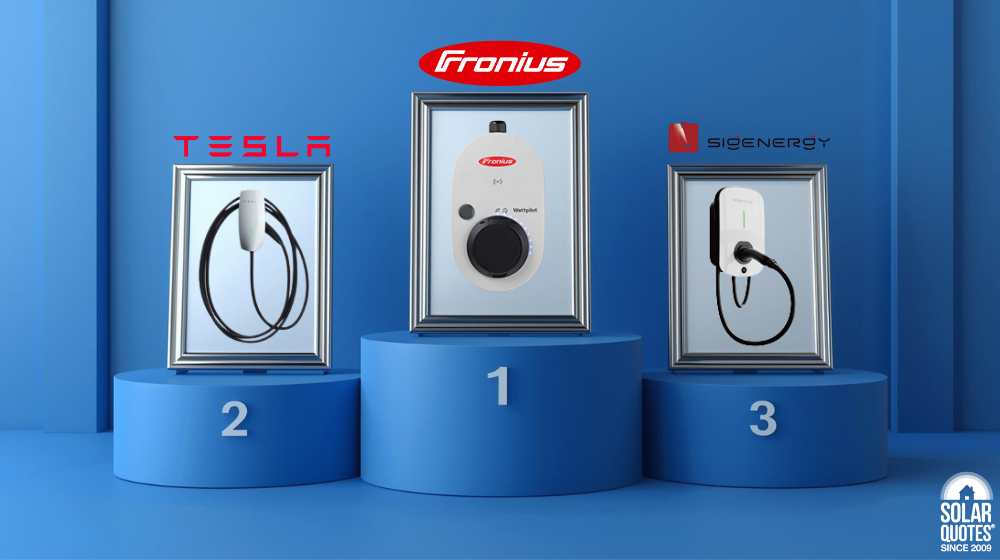
We asked 569 installers which EV charger brand they would get on their own home in 2025. The Fronius Wattpilot took gold, while the Tesla Wall Connector took silver. Meanwhile, the Sigenergy EV charger already managed to take bronze in their first year in the market.
If you’re more interested in what Aussie homeowners think, have a look at our top 10 best EV chargers according to Australian reviewers.
- Why Does Your Home EV Charger Matter?
- What’s the difference between kW and kWh, and why does it matter for home EV chargers?
- How Do Home EV Chargers Work?
- What’s the Difference Between Level 1 and Level 2 Charging?
- Do You Need a Dumb or a Smart EV Charger?
- How Much Does EV Charger Hardware And Installation Cost?
- Which Plug is Right for Your EV Charger?
- Do You Need a Single-Phase or a Three-Phase EV Charger?
- How Does Your Car’s AC Charging Rate Affect Your EV Charging Speed?
- What Are The Maximum AC Charging Rates for EVs Sold in Australia?
- Understanding EV Charger Warranties
- How Do You Integrate Your EV Charger With Solar And Home Batteries?
- Which EV Charger Features Matter?
- What Are The Best Home EV Chargers in Australia?
- Where Should You Install Your EV Charger: Garage or Driveway?
- What Are Bi-Directional EV Chargers?
- FAQs
- Conclusion
- EV Charger Quotes
Why Does Your Home EV Charger Matter?
A good EV charger does more than fill your car battery as fast as possible; it optimises your charging to automatically charge from solar and/or cheap overnight electricity, dodging peak electricity rates, which can be up to ten times more expensive.
Pro-Tip: If you have a home battery, a well-integrated EV charger charges your car without draining your home battery’s energy. An EV charger that’s not properly integrated will simply drain your home battery into the car’s battery, leaving your home dependent on the grid overnight.
If you simply buy a cheap charger online or from Bunnings and then ask your local sparky to install it – it won’t be configured to play nice with your electricity tariff, solar or home battery. This guide will show you how to choose the right EV charger and find an electrician who knows how to install it properly.
What’s the Difference between kW and kWh, and Why Does It Matter for Home EV chargers?
In this guide, I’ll regularly use two key terms: power (kW) and energy (kWh). The little ‘h’ at the end changes the meaning completely.
In the realm of EV charging:
- Power (kW) indicates the charging speed for your EV’s battery, ranging from 2 kW to 22 kW for home setups.
- Energy (kWh) measures your battery’s storage capacity, with each kWh enabling approximately 6 km of driving.
The terms ‘Power’ and ‘Energy’ are not interchangeable when talking about EV charging.
An example: if your EV charger charges at a power (AKA speed) of:
- 7 kW
- for 2 hours
…you will get 14 kWh of energy into your car’s battery.

How Do Home EV Chargers Work?
EV chargers use either alternating current (AC) or direct current (DC) to charge your car’s battery.
Almost all home EV chargers use AC. They convert AC power from the grid to DC power, which is compatible with the EV battery.
That sets home EV chargers apart from the fastest public chargers, which operate on DC electricity and can charge up to 50 times faster than a typical home charger.
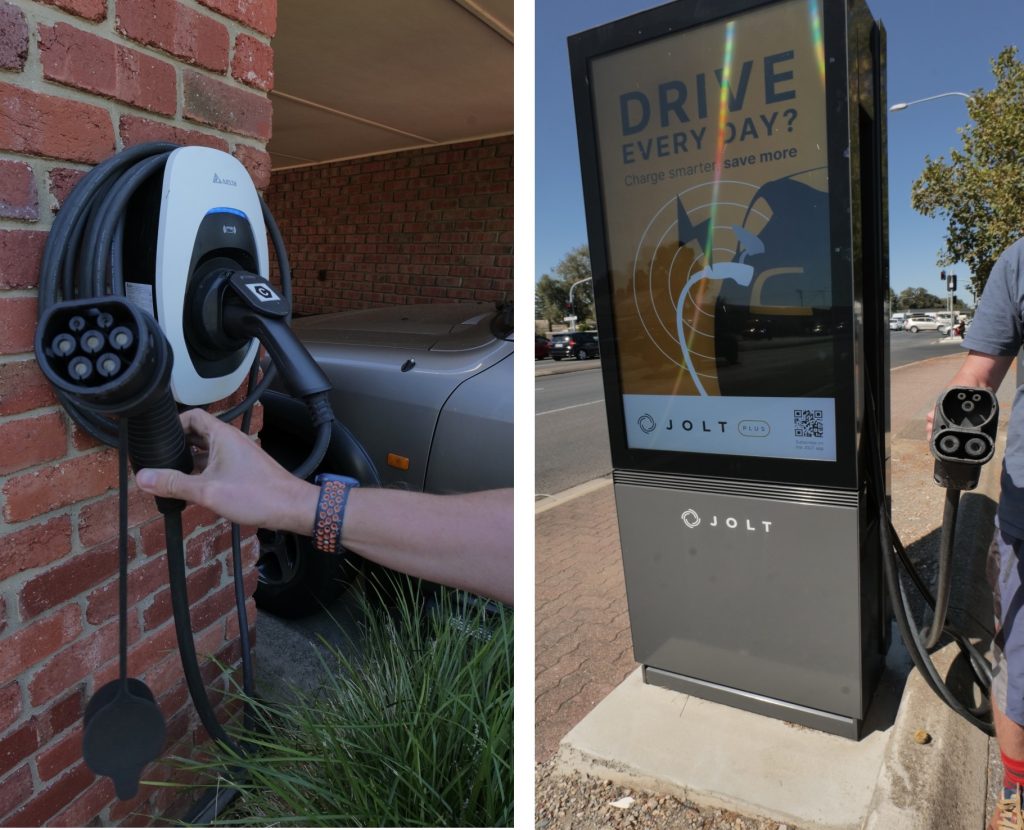
Nerd Fact: Can you install a DC fast charger at home? Yes! As a part of Sigenergy’s Sigenstor all-in-1 battery, you get a 25 kW bi-directional DC charger, which is the fastest home EV charger currently available in Australia. Find out more in the video below:
A Home EV Charger Is Not An ‘EV Charger‘
Although the device on your wall is commonly referred to as an EV charger, the actual charging system—responsible for converting your home’s AC electricity into DC electricity and safely feeding it into the battery is built into your car:
The onboard charger looks something like this:
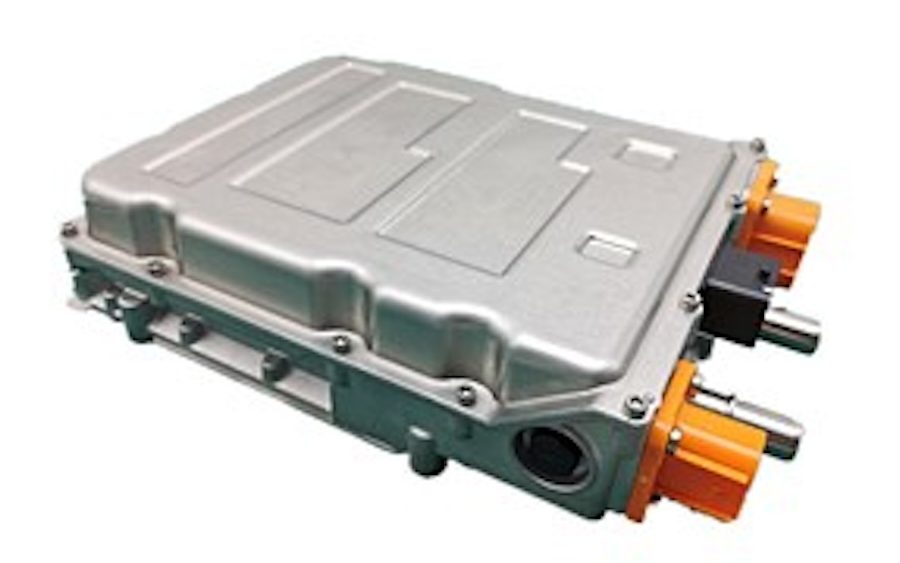
Onboard EV charger power ranges from 2 kW to 22 kW, depending on the car model.
The charging station on your wall is technically called an EVSE (Electric Vehicle Supply Equipment). It works like this:
- the charger inside your car tells the EVSE how much power (kW) it can take
- then, the EVSE supplies power to the car’s charger, but only up to that limit
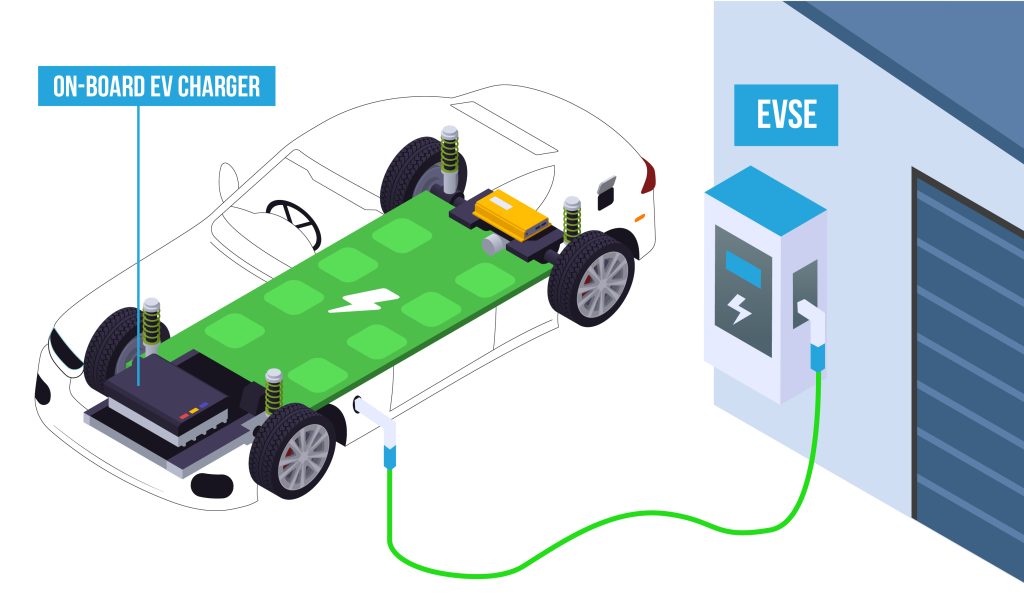
What’s the Difference Between Level 1 and Level 2 Charging?
Slow Trickle Chargers (Level 1 EV Chargers)
Trickle chargers come for free with most cars, except Teslas. They start at $350 when bought separately (Tesla’s ‘Mobile Connector’ costs $550). Because they plug into a standard power point, they don’t require installation (unless you need to install a new power point where you park the car).
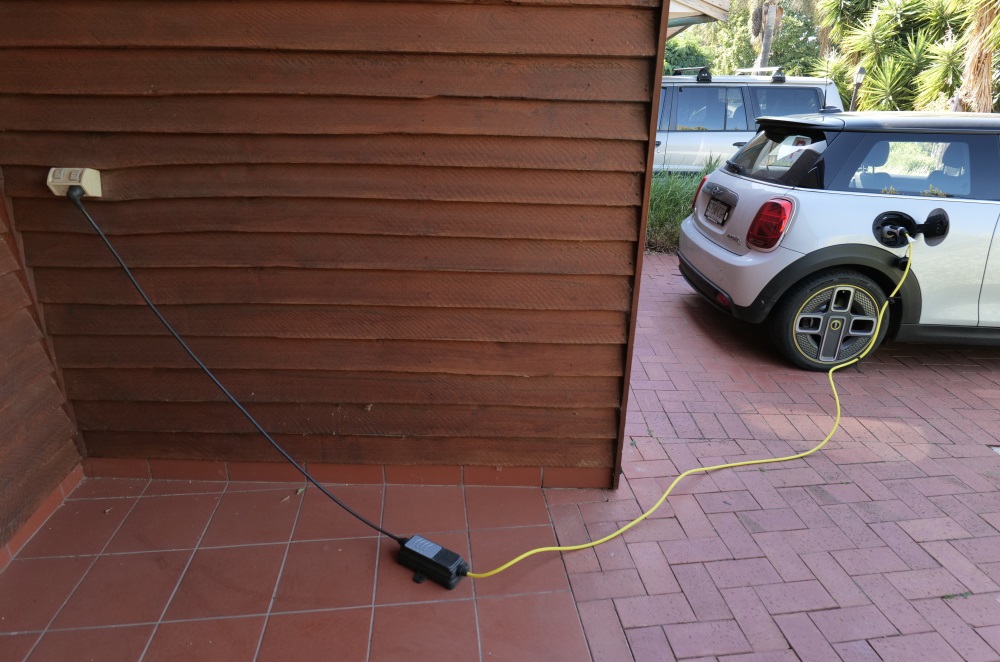
Pro-Tip: Be careful using an extension cord to power your EV. Consider investing in a dedicated power point close to the car for regular charging. If you must use an extension cord – please read our in-house electrician’s advice on the safer way to charge with an extension cord.
A standard powerpoint is limited to providing 10A of current.
10A x 230V = 2.3 kW.
That means trickle chargers charge at about 2 kW.
If your car has a small 60 kWh battery (e.g. Tesla Model 3 RWD), that’s 30 hours to fully charge.

Check if your mobile charger has a button or setting to adjust the amperage. Many chargers are set to their lowest amp setting (e.g., 6 amps) by default, limiting charging speed. Switching to a higher setting (e.g., 10 amps) can significantly reduce charging time.
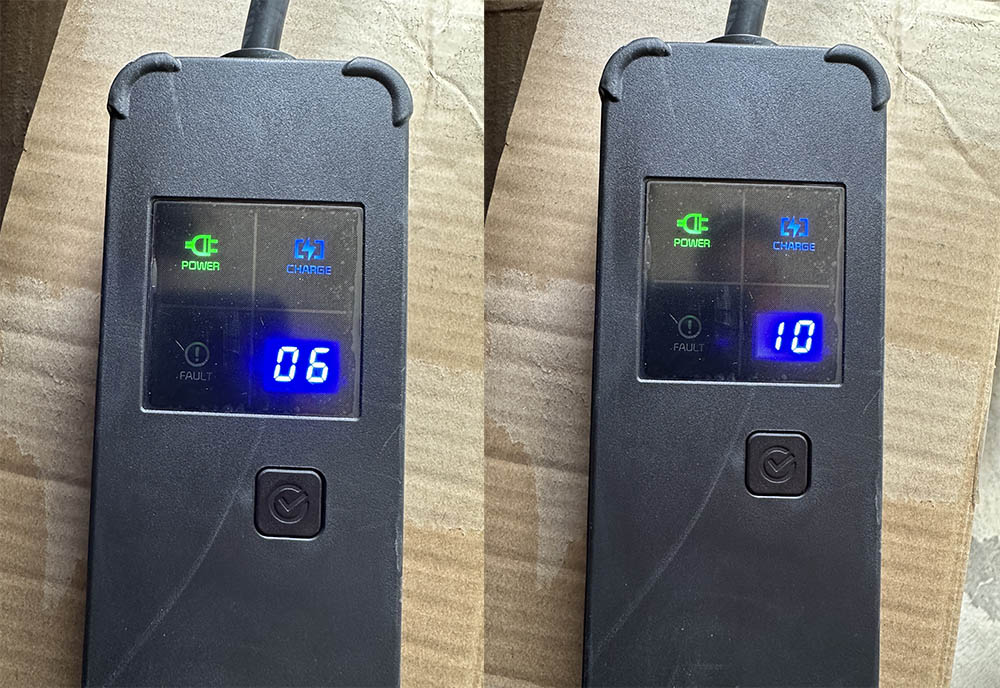
This mobile charger will charge the car faster at 10 amps (right) than at 6 amps (left).
Trickle charging limitations
Trickle chargers are painfully slow unless you have a small battery or don’t drive much. The charge rate is equivalent to adding 10 km of range every hour.
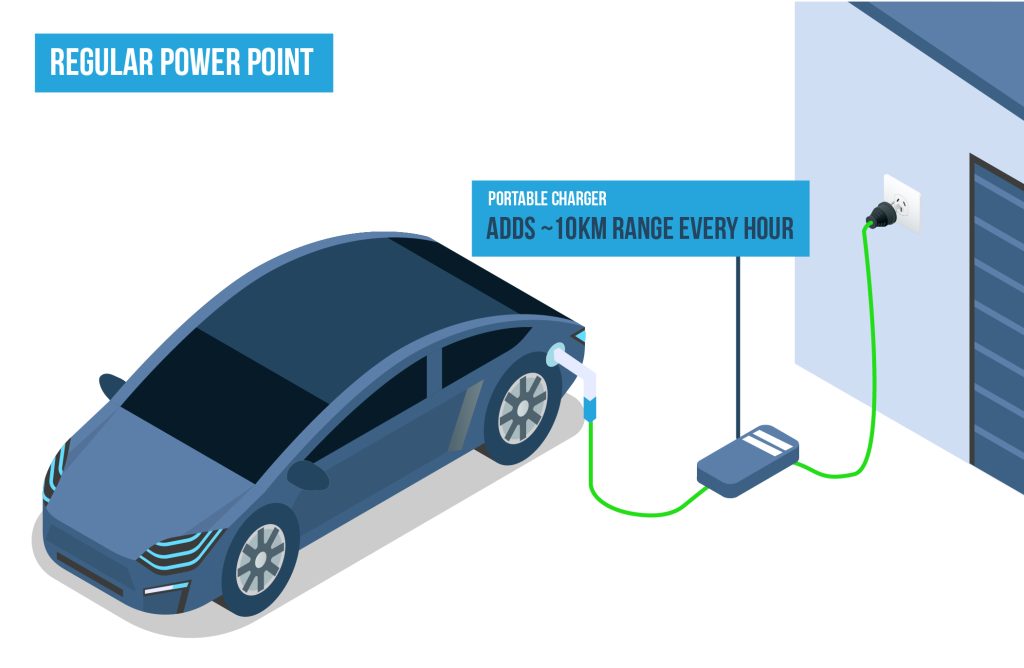
If you’re using a trickle charger for your car, you might keep it plugged in at home all the time to get as much charge as possible. But, there are downsides:
- Costly Timing: Charging in the evening peak, between 4 pm and 10pm, can hit your wallet hard. This is when electricity prices soar because almost everyone’s pulling from the grid. If you’re on a standard rate, you might not notice. But those on a time-of-use rate will. You could set a timer to charge in off-peak hours (10 pm-5 am), but then you’re only getting a limited charge, about 14 kWh, which might not be enough.
- Solar Challenges: Depending on your solar setup and the time of year, there might only be a short window of 3-4 hours daily when you’ve got enough surplus solar to charge the car. Your mobile connector will pull electricity the grid outside of these hours, which can be 10x more expensive per kWh.
- Safety Risks: Standard power points can be vulnerable to the long, high-amperage draw that car charging demands. Using one at a constant 10 amps will expose any wiring issues in your home, from tripping breakers to more serious hazards like overheating plugs. While some advanced mobile chargers can sense temperature and dial back power to prevent overheating, not all have this feature. If you regularly charge from a power point, please read this advice from our in-house electrician, Anthony, to stay safe.
Pro-Tip: I recommend investing in a proper hard-wired charger at home and leaving your mobile charger in the boot for emergencies. If you’ve invested thousands in an EV, invest a little more in proper charging for your home.
Fast Hard-Wired Home Chargers (Level 2 Home EV Chargers)
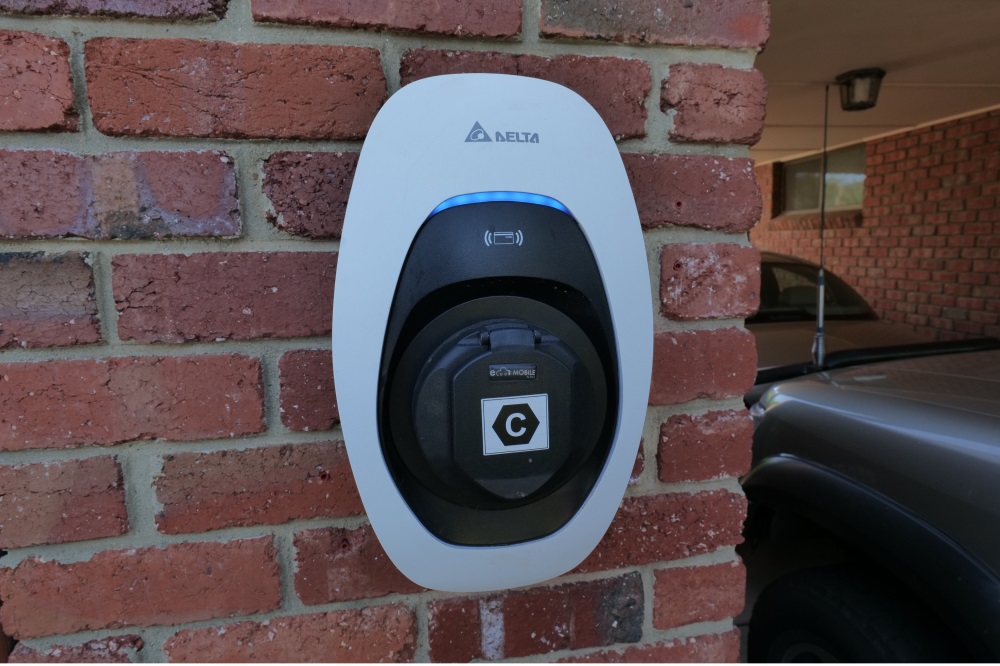
A hard-wired EV charger designed for household use can charge at 7 kW to 22 kW. That’s between 3 and 10 times faster than a regular mobile connector. To achieve these charging speeds, a dedicated cable is installed back to your switchboard.
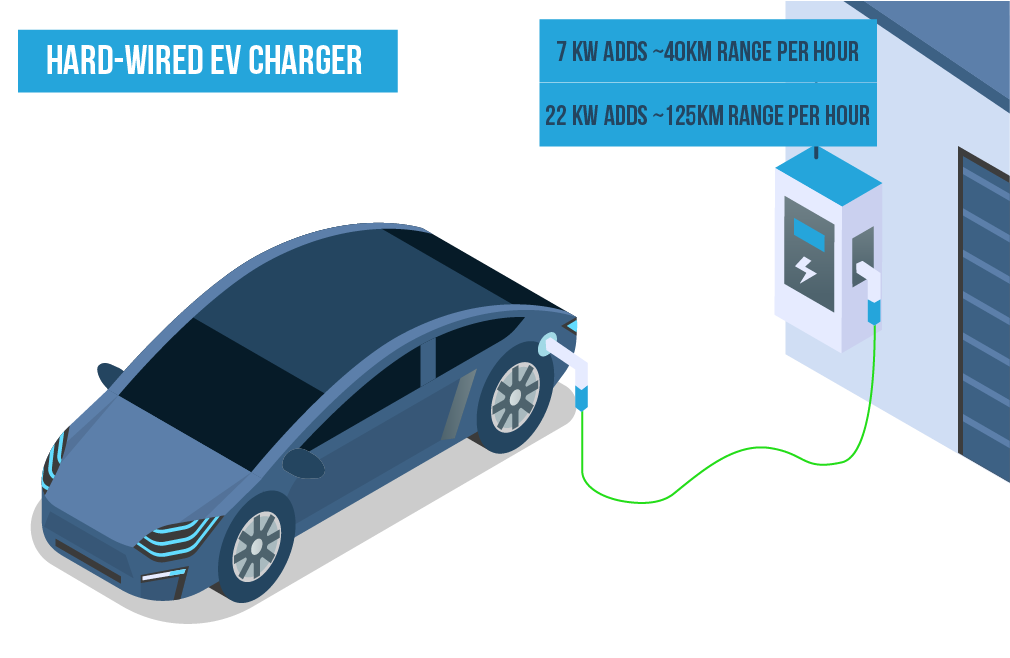
The speed of your home EV charger depends on two things:
- Whether your charger is 3-phase or single-phase (3-phase is up to 3x faster)
- The maximum AC charge rate of your car model (e.g. BYDs are 7 kW max, modern Teslas are 11 kW max)
Is Charging From A 32-Amp Socket Level 1 or Level 2 Charging?
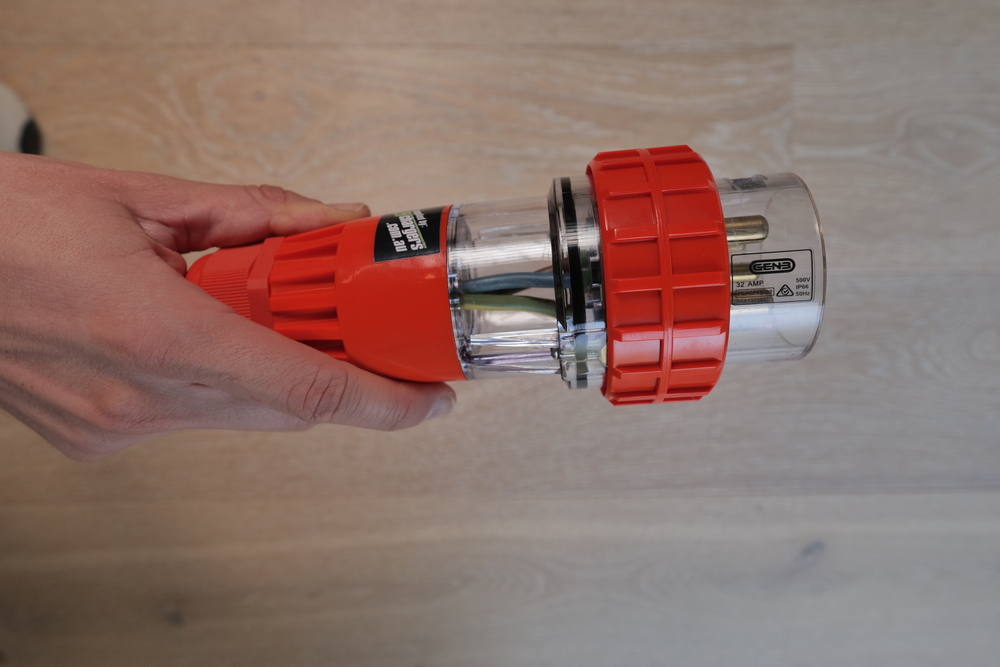
You can install an industrial-style 32A socket, and buy a portable charger that has a plug like this to achieve Level 2 charging speeds.
If you plug a portable EV charger with a 32A plug into a 32A industrial socket—whether single or 3-phase—you’re effectively getting the same power as a hard-wired Level 2 charger, without permanently installing the unit. This setup is especially popular with EV owners who want full-speed charging without any bells and whistles.
Want to know more? We’ve got a whole page on EV charging with a 32-amp socket
Tesla Tip: Tesla’s mobile charger has interchangeable plugs, and can charge at 7 kW, with a third-party 32A plug. I don’t know of any other car-manufacturer-supplied mobile connectors with this feature.
Do You Need a Dumb or Smart EV Charger?
To determine whether you need smarts in your EV charger, let’s discuss the difference between dumb chargers and smart chargers.
Dumb EV Chargers
A Dumb home charger charges as fast as possible every time you plug in. The car tells the charger the maximum power it will accept (via one of the wires in the EV charging cable), and a dumb charger simply matches that power.
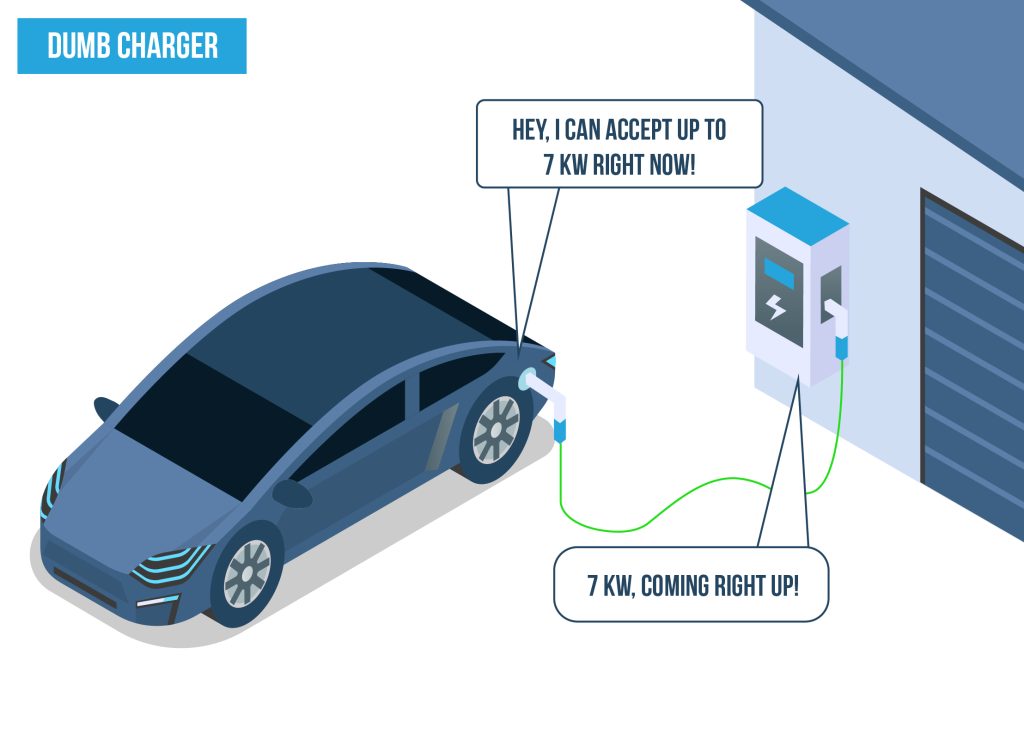
Smart EV Chargers
However, with a smart charger, you gain control. In essence, it can decide whether to charge or not and may adjust the charging speed based on:
- Time of day
- Variable Electricity tariffs
- Excess solar power
- Home battery levels
- Commands from your electricity retailer (if you sign up for such a plan)
- Commands from your local electricity network (this doesn’t happen now but is likely in the future to prevent grid overload)
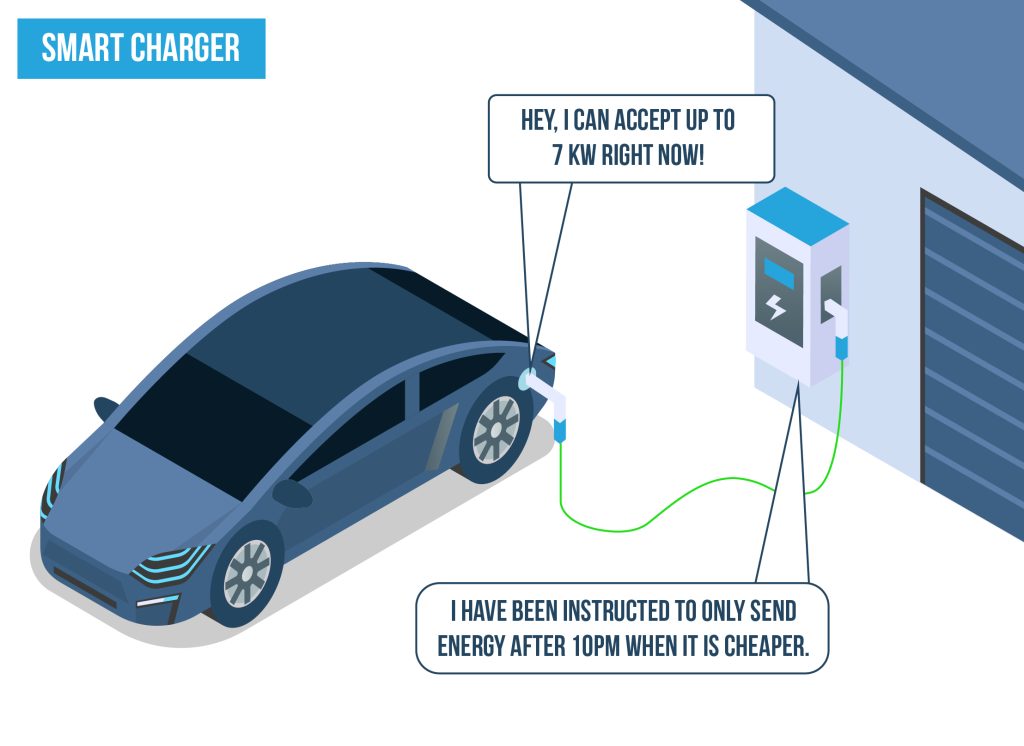
Is A Smart EV Charger Worth the Higher Price?
It depends. If you have solar, the higher price is worth drastically reducing or even eliminating charging costs through excess solar. Without solar, a smart charger can still save money by intelligently charging during cheap off-peak tariffs. However, if you don’t use solar and have a flat electricity rate, the extra features may not justify the higher cost.
How Much Does EV Charger Hardware And Installation Cost?
Hardware Cost
Since the internal electronics of an EV charger are relatively simple, many cheap options exist. However, the cheapest single-phase EV charger I would comfortably recommend is the Tesla Wall Connector. This one goes for $800 for single or 3-phase supplies. You can buy it directly from Tesla, but I’d recommend buying from the installation company. Then, they are responsible for both the hardware and installation warranty.
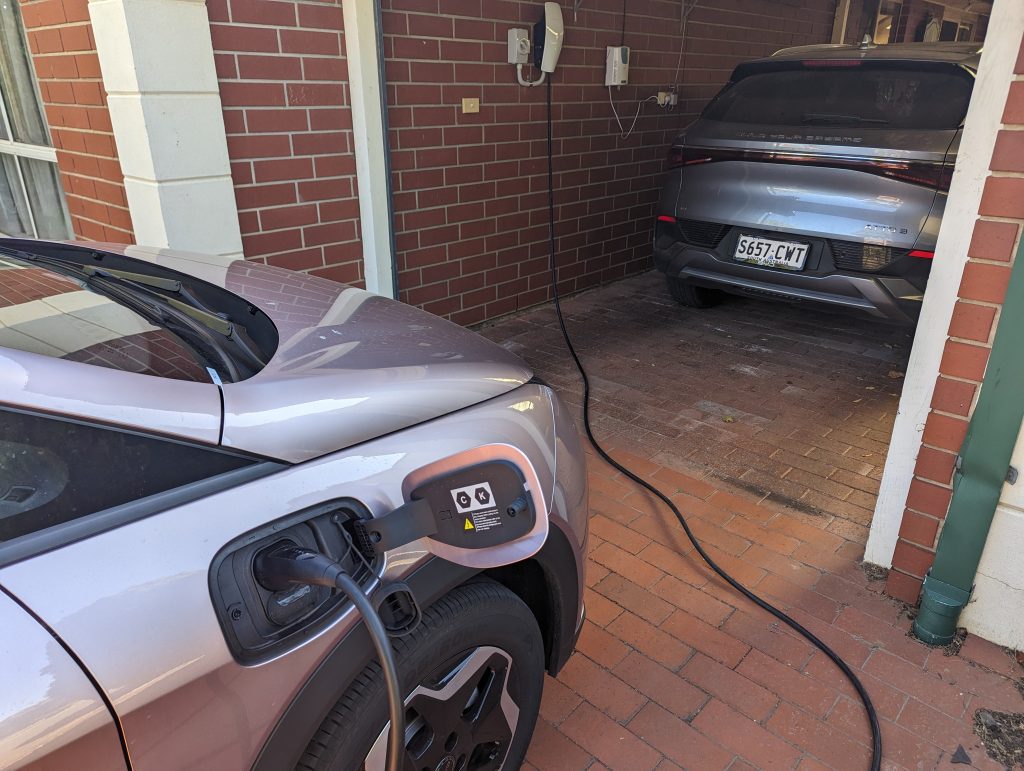
While the Tesla Wall Connector is compatible with most modern EVs, it is considered a ‘dumb’ charger with no native smart solar charging capabilities unless you own the entire Tesla ecosystem, i.e., a Powerwall home battery and Tesla car.
Nerd Fact: Tesla’s ‘Gen 3 Wall Connector’ will not be dumb for long. We expect an Over The Air update soon, that will make it OCPP compatible. Hooray!
The most expensive home charger I know of in Australia is the 25 kW SigenStor DC EV Charging Module, which costs an eye-watering $6,700. Then again, no other brand offers DC charging for home use.
Most home EV chargers with a good feature set cost about $1,500.
The cheapest OCPP-compatible charger I know of is the ZJ Beny at around $750, but I wouldn’t recommend it. A friend bought one and had so much trouble with it that he swapped it for a Tesla Wall Connector.
Installation Cost
EV Charger installation can cost as little as $300 for a single-phase charger right next to your switchboard, and up to many thousands if you need to run a long power cable, dig trenches, or even upgrade your supply and/or switchboard to handle the extra power requirements.
But most people will pay $1000 – $1,500 for the installation on top of the hardware cost.
- Cable cost would go for $10 – $15 per meter.
- Standard single-phase switchboard overhauls might range between $1200 – $2000
- The cheapest DNSP supply upgrade would be $600 plus consumer mains cabling on the customer’s property, but if new power poles or transformer upgrades are required, this could expand to $60,000!
Which Plug is Right for Your EV Charger?
If you are buying a Home EV Charger, what connector/plug should it have to be compatible with your car?
This one is easy. Unless you drive an EV more than 5 years old (pre-2020) or have a special import, you need a ‘Type 2’ plug (also known as a Mennekes or CCS2), which looks like this:
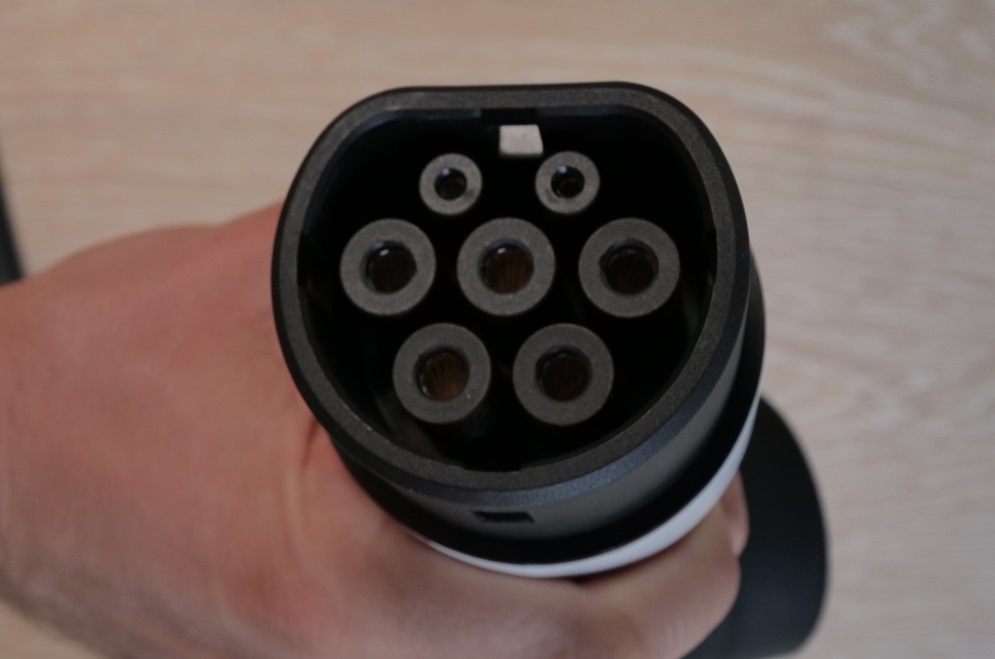
You can confirm by looking at the charging socket on your car it should look like this.
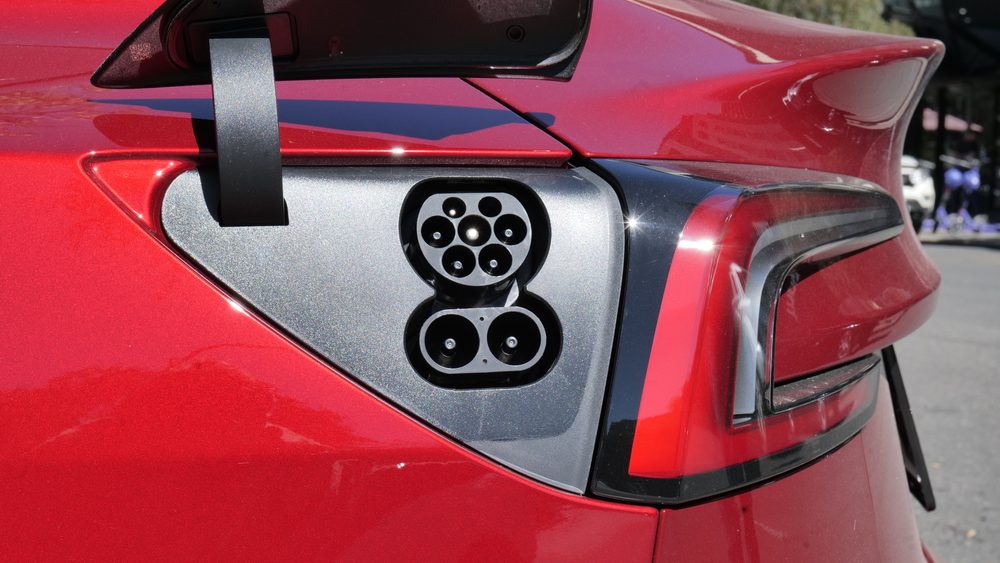
You may have noticed that the socket is a different shape from the plug! Don’t worry. The bottom part of the socket is for fast DC chargers to use. I’ll explain why later.
If you have an older EV you may need an adaptor to go from a modern EV charger’s Type 2 plug to fit your car’s vintage socket.
Do You Need a Single-Phase or a Three-Phase EV Charger?
All modern EVs can charge at 7 kW (~ 40 km added per hour) with a single-phase hard-wired EV charger.
If your home has a 3-phase supply, and you buy a 3-phase EV charger, each phase is capable of a maximum 7.3 kW. This way, your charger can charge at 22 kW (~ 125 km added per hour).
Pro-Tip: If you have a 3-phase supply, buy a 3-phase charger. The hardware costs either the same or about a hundred bucks more for 3-phase, and the installation costs a couple hundred bucks more. But, you’ll enjoy the faster charging when you are in a hurry, and even if your current car can’t charge at 3-phase speeds, you’ve future-proofed your EV charging setup.
How Does Your Car’s AC Charging Rate Affect Your EV Charging Speed?
Some EVs can charge faster on 3-phase, while others can’t. For example, BYDs cannot charge quicker than 7 kW regardlesse whether it’s on single- or three-phase AC.
Tesla’s Model 3 and Y can charge at 7 kW on single-phase and 11 kW on 3-phase.
Onboard charging at a full 22 kW on 3-phase AC is currently only available in Australia for the Polestar 4, Audi e-Tron GT and the Porsche Taycan, if you pay for the upgrade. The Renault Zoe can charge at 22 kW too, but it has been discontinued in Australia.
What Are The Maximum AC Charging Rates for EVs Sold in Australia?
Is your car capable of charging at 7 kW, 11 kW, or 22 kW? To help you answer this question, we made a table showing the maximum AC charging rate for popular EVs in Australia. Use this to match your EV with the right charger.
| EV | Maximum AC charging rate |
|---|---|
| BYD Dolphin | 7 kW |
| BYD Seal | 7 kW |
| BYD Atto 3 | 7 kW |
| BYD Sealion 6 | 7 kW |
| Renault Megane E-Tech | 7 kW |
| Fiat 500e | 11 kW |
| Mini Cooper EV | 11 kW |
| MG4 | 11 kW |
| Tesla Model 3 | 11 kW |
| Polestar 2 | 11 kW |
| Hyundai Ioniq 6 | 11 kW |
| Tesla Model Y | 11 kW |
| Kia EV6 | 11 kW |
| Hyundai Ioniq 5 | 11 kW |
| Volvo XC40 Recharge | 11 kW |
| Mercedes-Benz EQB | 11 kW |
| BMW iX3 | 11 kW |
| Audi Q4 e-tron | 11 kW |
| Polestar 4 | 11 kW |
| Kia EV5 | 11 kW |
| Porsche Taycan | 11 kW |
| Audi e-tron GT | 11 kW |
| Mercedes-Benz EQS | 11 kW |
| BMW i7 | 11 kW |
| MG Cyberster | 11 kW |
| LDV eT60 | 11 kW |
| Ford E-Transit | 11 kW |
| Mercedes-Benz eVito | 11 kW |
| Jeep Avenger | 11 kW |
| Hyundai Ioniq 5 N | 11 kW |
| Cupra Born | 11 kW |
| Polestar 4 + Paid upgrade | 22 kW |
| Porsche Taycan + Paid upgrade | 22 kW |
| Audi e-Tron GT + Paid upgrade | 22 kW |
Understanding EV Charger Warranties
Most people only use their hard-wired EV chargers for a couple of hours a day and their electronics are relatively simple. The longest EV charger warranties I’m aware of are only 5 years and most are only 2 or 3.
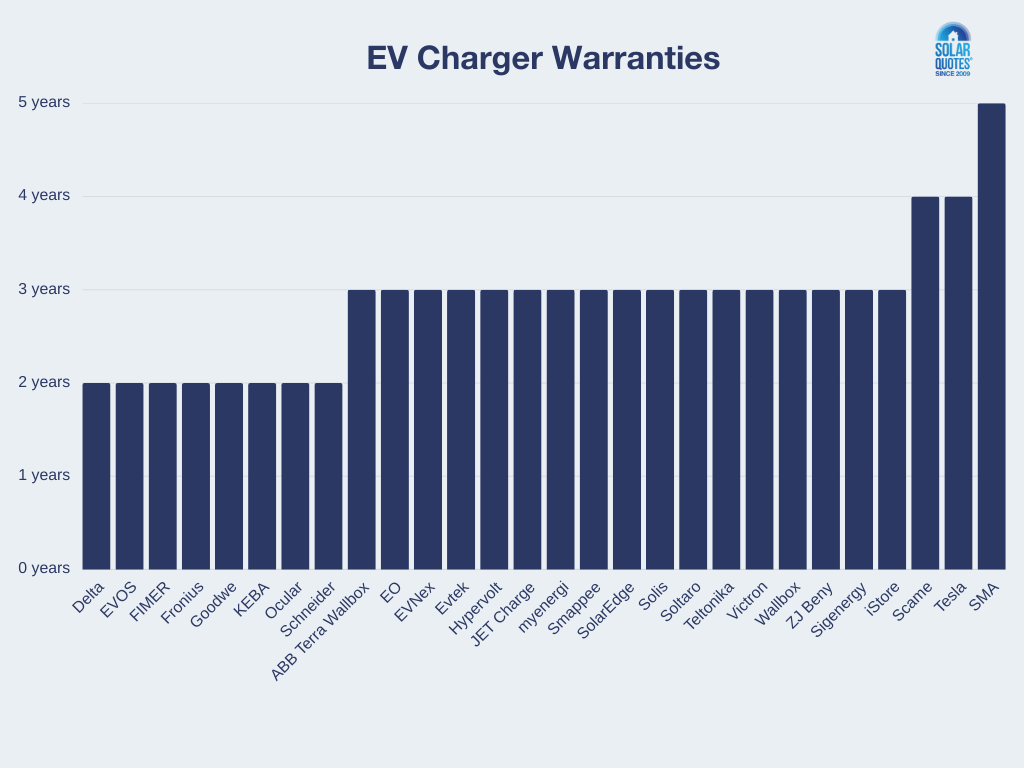
But the warranties don’t just have a problem with length. The protection they provide can be very limited. Ideally, you’ll want a warranty that…
- fully covers the full cost of replacing a failed unit — including labour and transport. Watch out for warranties that only compensate with an undefined “market price” or only offer credit on the company’s products.
- covers all components without exclusions, including the charging cable if it comes with one.
- doesn’t exclude “wear and tear” as a cause for a warranty claim. If normal use can wear out an EV charger within its warranty period, then it’s a lousy product.
- is backed up by an office in Australia. If the manufacturer doesn’t have an Australian office, then the importer is responsible for the manufacturer’s warranty.
Australian Consumer Law
Few EV charger warranties meet all the points above. But the good news is Australian Consumer Guarantees will still protect you. These apply no matter what a written warranty says and can still provide protection even after the warranty period. However, having a warranty that doesn’t force you to rely on Consumer Guarantees is always better. If something goes wrong, you’re less likely to need a fight to get the service you’re entitled to.
To ensure the best possible consumer protection, I recommend paying an installer to both provide and install your EV charger. This way, if there’s a problem, the installer is responsible for ensuring your system functions as it should. If your installer is no longer around you can contact the manufacturer directly.
But if you purchase an EV charger online and then pay an installer to put it in, the installer is not responsible for the hardware warranty. You might get caught in the middle between manufacturer and installer, one blaming the other for problems.
How Do You Integrate Your EV Charger With Solar And Home Batteries?
Integrating Your EV Charger With Solar
If you have a large enough solar array, then one of the best features to look for in a home EV charger is smart solar charging.
This feature, when enabled, will monitor how much excess solar is available and divert that solar electricity into your car battery. That way, you are filling your car with the cheapest electricity in the world: behind-the-meter Australian solar.
If you want your home EV charger to automatically follow your solar output (speeding up when there’s surplus and slowing when there isn’t), check out our full Solar EV Charger Guide.
It explains how solar-aware chargers, inverter integration, current sensors (CTs), and third-party apps like ChargeHQ work together to maximise self-consumption, avoid battery drain, and help you drive on sunshine for only cents per kilometre.
Integrating Your EV Charger With a Home Battery
If you have a home battery, it’s usually best to save the energy in the battery for your home, not to empty it into your car. Do you want to prevent this from happening? The foolproof way to do it is with this simple wiring change.
If your EV charger is the same brand as your home battery or hybrid inverter, then you should be able to achieve the same outcome with software. As they can all talk to each other, this gives you more flexibility.
Which EV Charger Features Matter?
Smart EV chargers can include several smart charging features. But I’d say the most important feature is a weird acronym: OCPP.
Essential Feature: OCPP – The One Feature To Rule Them All
The most forward-thinking feature of an EV charger is its compatibility with the Open Charge Point Protocol (OCPP). This facilitates communication with other OCPP devices and integration with third-party services for optimised charging strategies, including cost-saving tariffs linked to energy market prices.
If you have OCPP, most of the following features can be added with software:
Optional Feature #1: Multiple Charger Load Management
This feature allows for coordinating multiple chargers to distribute electrical load evenly. This ensures the household’s main circuit breaker isn’t overwhelmed.
Optional Feature #2: Household Loads Demand Management
For homes with high power demands (e.g., electric floor heating), enhanced load balancing adjusts the power distribution to prevent circuit overload while charging EVs.
Optional Feature #3: Extra Cable Length
Ensure your cable is long enough to work any way you park. Pick an untethered charger and grab a lengthy ‘Type 2 to Type 2’ cable. This way, you can easily charge two cars, no matter how they’re parked, without the hassle of moving them around.
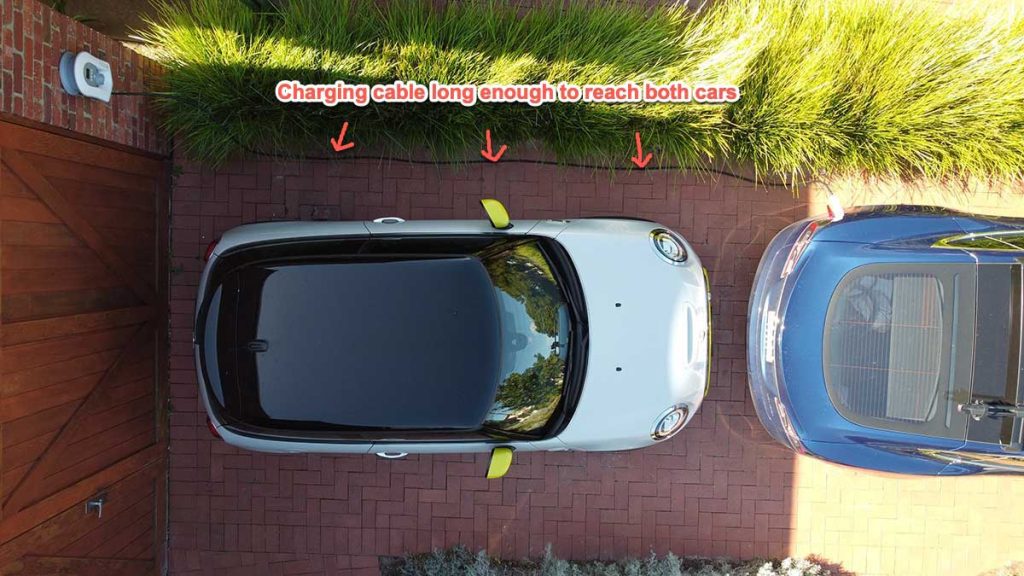
Optional Feature #4: Timers
Using a timer to benefit from time-of-use tariffs for cheaper off-peak charging makes sense, especially when solar production is insufficient. Every EV I’ve ever sat in can also be configured to charge on a timer – but I find it easier to rely on the charger than the car, especially if you have multiple EVs.
Optional Feature #5: Secure Access
Implementing a PIN code restricts charger access and ensures that only authorised users can initiate charging, providing peace of mind.
Optional Feature #6: Individual Car Electricity Use Tracking
Can the charger identify each user or vehicle and log their electricity consumption? This helps manage expenses among multiple drivers. This can be done through automatic detection or unique identifiers like codes or RFID cards.
Which EV Charger Brands Available In Australia Do I Recommend?
Here’s a chart of EV charger brands that installers have told me good things about—and I’d be more than happy to use myself.

The Y-axis shows the brand names in alphabetical order, and the X-axis shows estimated retail prices.
Next up, my brand-by-brand verdict of EV charger brands available in Australia.
| Brand | My verdict |
|---|---|
 |
ABB is a multi-billion dollar industrial giant from Switzerland. So its EV chargers should be well-made and well-backed. |
 |
Delta Electronics is another giant industrial company, this time from Taiwan. They make inverters for Tesla and other EV companies. Their residential EV chargers, although fiddly to set up, are good quality and reliable but frustratingly have a miserly 2-year warranty. |
 |
Evnex are a relatively new company based in NZ. On paper their car chargers look excellent value. I’ve yet to see one in the flesh, though. |
 |
EO is a British manufacturer of teeny-tiny EV wall chargers. |
 |
Amazing Fronius quality, OCPP and easy integration into the Fronius ecosystem make a Fronius Wattpilot EV charger a no-brainer for those with a Fronius inverter. |
 |
FIMER is a solar inverter manufacturer that also makes electric vehicle chargers for home. Only worth considering if you already have a FIMER inverter. |
 |
Hypervolt is another UK crowd making nice-looking, good-value chargers. |
 |
JET Charge is an Aussie startup company providing good support. Their electric car home charger is a little pricey, though. |
 |
KEBA makes high-quality, if somewhat ugly, Austrian EV chargers. |
 |
MyEnergi is a longstanding manufacturer out of the UK. They pioneered the ‘smart-solar’ charger many years ago. Their early models were pretty crap IMO, but the latest model – finally with Wi-Fi and OCPP – is worth considering. |
 |
Ocular is a Chinese company making well-regarded home chargers under $1,000. |
 |
SMA make great quality, reassuringly expensive gear. Unfortunately, they have told us that due to market demand in the EU, they have discontinued their EV charger in Australia. Meanies. |
 |
Schneider is a huge company with industrial roots. I used their gear in factories in my engineering days, so they should be reliable. But I can’t recommend them because – for their price – their warranty is just too short. |
 |
SolarEdge is a big company in the solar world. If you’ve got a SolarEdge inverter, get a SolarEdge EV Charger. It’s a no-brainer. They can talk to each other out of the box, making everyones life easier. |
 |
Tesla’s Wall Connector EV charger is good quality and great value at $800 for the hardware. It will charge any brand of recent EV in Australia. But there’s a big problem. It’s dumb. Unlike most other home EV chargers, it can’t be set up to only charge off excess solar without a Tesla Powerwall. So, if you want a reliable, cheap, dumb charger for any EV – it’s a great choice. If you want smarts, look elsewhere. (Tesla car owners can make it smart without buying a Powerwall by using the ChargeHQ app, which controls the charging by talking to the Tesla car, not the Tesla charger – but that has an ongoing monthly subscription fee). |
 |
Wallbox is one of the original EV charger manufacturers and has a good reputation for quality, support and all the features you need. I’d be happy with a Wallbox EV charger on my wall. |
Where Should You Install Your EV Charger: Garage or Driveway?
According to EV FireSafe, an EV has a 1 in 83,000 chance of catching fire.
Even with those odds, I prefer to charge on a shaded driveway. My logic is that, although extremely unlikely, if my EV does catch fire, it’s less likely to burn the house down. So, my EV charger is installed outside.
But that’s just me. If you are happy to store a petrol car in your garage, charging an EV in there should be acceptable to you, too, as an EV is about 80 times less likely to catch fire than a petrol or diesel car.
EV chargers in the driveway can be mounted on a wall or a post. Charging cable length will determine whether you need to park a certain way around to reach the charge point – especially if you have more than one car.
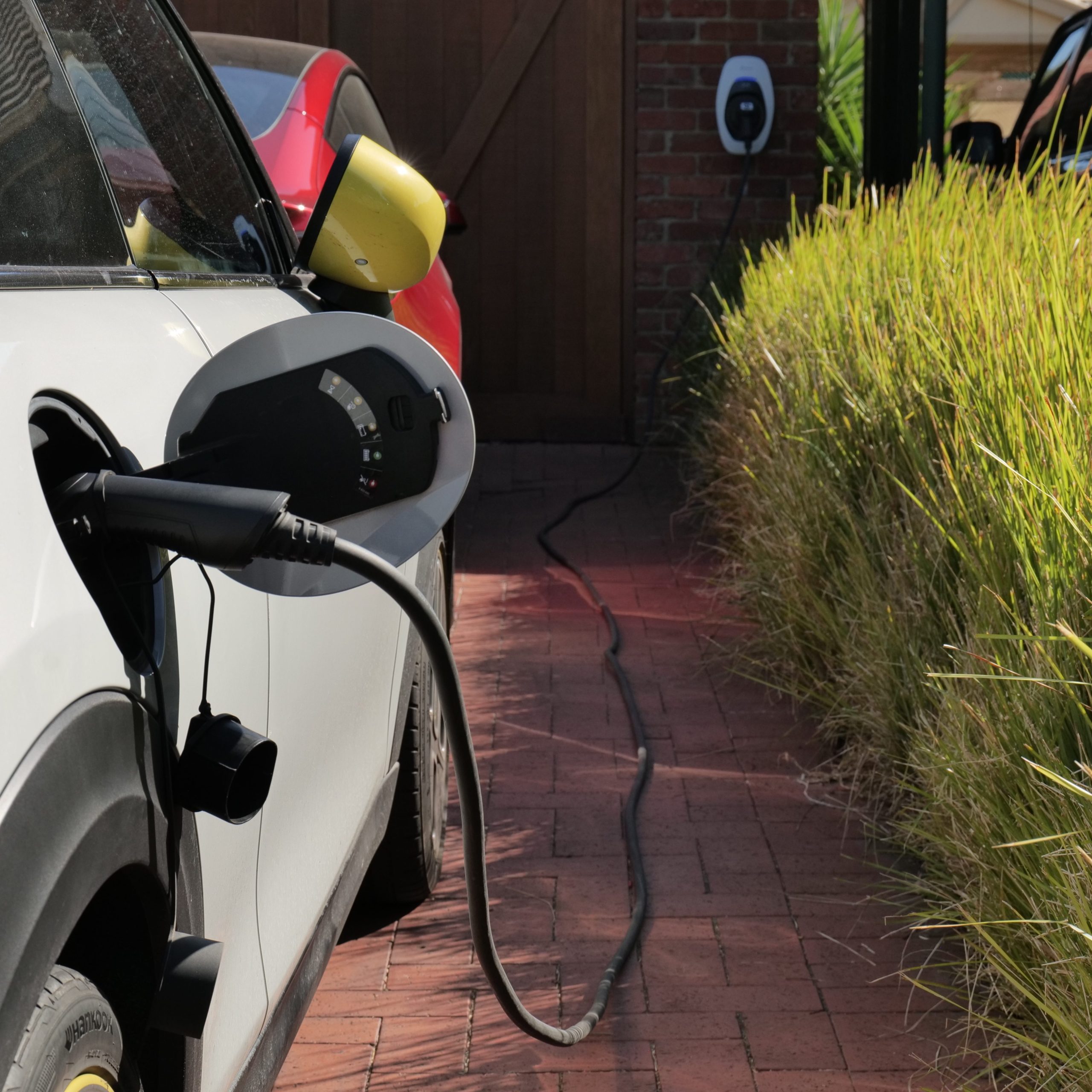
Sidebar: Don’t have a driveway for an EV Charger? Solutions to EV charging on the street are explored here.
What Is Bi-Directional EV Charging?
Bi-directional charging lets electricity flow both ways, into your EV and back out again, so your car can act as a mobile battery. There are three ways to use electricity from your car:
- V2L (Vehicle-to-Load): Power appliances directly from the car (handy for outages, camping, tools). Some EVs may have standard power points built in, but usually a V2L adapter is required. This is already commonly available in Australia today, as it does not require a dedicated bi-directional charger.
- V2G (Vehicle-to-Grid): Power your home and export energy to the grid during peaks to earn revenue. With the right backup hardware, it can power your home in a blackout. You will need a dedicated bi-directional charger for V2G.
- V2H (Vehicle-to-Home): Run your home using your EV like a home battery. Pairs well with solar and can keep essentials running during grid failures when installed with the correct backup hardware. You will need a dedicated bi-directional charger for V2H.
Where things stand in Australia: V2L is readily available now. However, V2G and V2H still need to clear some regulatory hurdles. In Nov 2024, Standards Australia approved a V2G standard, enabling legal and safe export from EVs. However, any charger used for V2G/V2H must be Clean Energy Council (CEC) certified, and as of today, no home chargers have that certification yet. Some products, like the Sigenergy SigenStor DC EV Charging Module, have suitable hardware but await firmware updates and certification.
The video below featured the now-discontinued Wallbox Quasar and Nissan Leaf. A Wallbox Quasar 2 was announced some time ago but there has been no release date yet.
Which EVs Offer V2L, V2G, V2H?
| EV model | V2L | V2G | V2H |
|---|---|---|---|
| BYD Atto 3, Dolphin, Seal | ✅ | ❌ | ❌ |
| Cupra Born | ❌ | ❌ | ❌ |
| Genesis GV60, GV70, G80 | ✅ | ❌ | ❌ |
| Hyundai Ioniq 5 | ✅ | ❌ | ❌ |
| Kia EV6, EV9, Niro EV | ✅ | ❌ | ❌ |
| MG ZS EV | ✅ | ❌ | ❌ |
| MG4 | ✅ | ❌ | ❌ |
| GWM Ora | ✅ | ❌ | ❌ |
| Nissan Leaf | ❌ | ✅ | ✅ |
Once all the regulatory hurdles have been cleared and bi-directional chargers are available, you still have to choose a car that is capable of V2G/V2H. The Nissan Leaf was the only fully electric car for sale in Australia with V2G and V2H actively enabled and supported in trials or real-world use. Unfortunately, it has been discontinued.
With no CEC-approved bi-directional chargers and no EVs with V2G capabilities enabled for sale in Australia, I do not think you should hold your breath for V2G. Instead, use the federal battery rebate to get a home battery with your solar now.
Tesla Powershare
‘Tesla Powershare’ is Tesla’s answer to Vehicle to Home (V2H) and is only available in the USA at time of writing. Americans can use Tesla Powershare if they have a Powerwall 3, a Tesla Wall Connector and a Cybertruck.
Check our blog post on Tesla’s Powerwall 3 for more information on how it works.
HOEM: V2H-like Capabilities with V2L
Home Open Energy Manager (HOEM) has a V2L controller you can install in your home. It enables V2H-like functionality from EVs with only V2L capabilities. When your V2L car is connected to the HOEM system, it can power select house circuits during grid outages or peak times.
EV Charger Cables
Which cable do I need for my EV charger? How long of a cable do I need? Is an adapter necessary? How much will a cable cost me? Find out the answers in my EV Charging Cables guide.
Public EV Chargers
When you can’t charge at home, you’ll need to charge at public EV chargers. I break down everything you need to know about charging on the road in my Public EV Charging guide.
EV Charger Reviews
How are everyday Australians finding their EV chargers? Read about their experiences and insights on our EV Charger Reviews page.
Apartment EV Charging
Being an EV owner living in an apartment comes with its own set of challenges. Find out how to convince your strata committee with our apartment EV charging guide.
FAQs
This depends on what type of charger you use. A modern 500-km-range EV will use about 16 kWh of electricity to go 100 km (it will use more when it’s cold or if you drive like a nutter).
Plugged into a regular powerpoint, it will take 8-10 hours to replenish that 100 km.
A typical hard-wired home charger will take just over 2 hours to add 100 km.
A DC fast charger can add 100 km in well under 10 minutes.
The charger you use, and the power it uses, will also determine the cost from ‘free!‘ to ‘Hang on, that’s almost as much as petrol!‘
A solar smart charger using excess solar, otherwise curtailed, can add 100 km for free.
A smart charger using excess solar, otherwise exported, can add 100 km for 48c to $3.20 depending on the forgone feed-in-tariff.
A timed charger on an off-peak grid tariff can add 100 km for as little as $1.28.
A dumb charger, charging in the evening peak, might cost closer to $10.
A DC fast charger can cost $13.60 to add that 100 km.
You can plug a trickle charger into a suitably rated socket. However, installing your own wiring to the main switchboard is illegal.
In many cases, EV chargers over 4.6kW or 20amps AC require network permission to connect. Meanwhile, installing the correct cable and circuit protection is electrical work that requires a 4-year qualification.
Yes, it’s safe to sit in your EV while it’s charging. Modern EVs come with several safety features that keep the high-voltage battery system separate from the cabin, so you’re not at risk from the charging current. However, keep in mind that running the air-conditioning might slow the charging rate down a little bit.
Charging an EV fast creates heat, which may be detrimental to long-term battery health. However, modern EVs have liquid cooling and refrigeration systems to control battery temperature. Meanwhile, the Battery Management System will limit charging speed if temperatures are too high or too low.
The real concern about charging speed should be etiquette.
Charging above 80% is a slow process, so you shouldn’t use a fast charger to completely fill your battery when someone is waiting. AC chargers are better for topping off, but 100% state of charge isn’t necessary unless you’re planning a maximum range trip.
Driving fast doesn’t deplete your EV battery in the same way an ICE (Internal Combustion Engine) car depletes its petrol at higher speeds. An IC engine is most efficient at wide-open throttle. However, few people ever get to use a “full acceleration, then coast to the next stop” driving technique.
EVs are fundamentally more efficient. This is in part due to the energy recovery available through regenerative braking. Full acceleration will create more waste heat in the electrical system and tyres. But fast driving won’t halve your fuel mileage around town.
Highway speeds are heavy on EV energy consumption, though. Aerodynamic drag increases with the square of speed, so anecdotally speaking, you’ll get twice as far at 90 km/h as you would at 120 km/h.
EVs don’t lose a great deal of charge while parked.
However, any modern EV or petrol car with keyless entry may suffer from a flat 12-volt battery. If the key fob is stored within a few metres of the parked vehicle, the car security system may be kept active, sweeping for a signal (with the expectation that you’re approaching and want the door open).
Keeping keys away from the vehicle – and maybe even in a Faraday cage – is also a good anti-theft measure.
Some EVs have a “sentry mode” where the mobile internet connection is kept active while the cameras on the front, rear and sides are all recording just in case there’s an incident. This can use some hundreds of watts of load, which might deplete the EV traction battery in a week.
Conclusion
If you are buying an EV and looking to invest in a home charger, I recommend the following:
- Invest in a hard-wired, Level 2 EV charger that can charge your EV from empty overnight. Leave your mobile charger in the boot for emergencies.
- If you have a 3-phase supply, install a 3-phase charger.
- If you have an EV, you’ll get great benefits from a large solar system. If you have a large solar system (10 kW+), you’ve likely got enough spare solar to make smart solar charging worthwhile. A smart solar charger can be configured to only charge from solar. That’s the cheapest ‘fuel’ you can get.
- Only use the fast DC public chargers on road trips. They are about 10 times more expensive than charging from solar at home.
EV Charger Quotes
If you’re ready to buy an EV charger, I can help you get quotes for quality home charging systems from pre-vetted installers quickly and easily:
